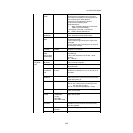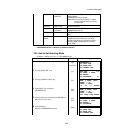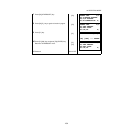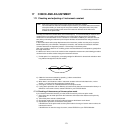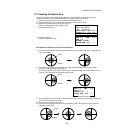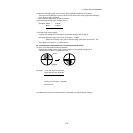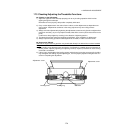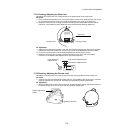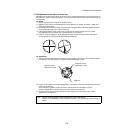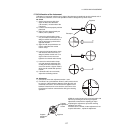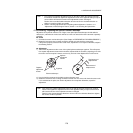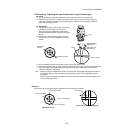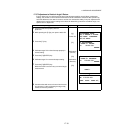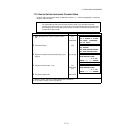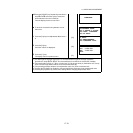
17 CHECK AND ADJUSTMENT
17-6
17.3.3Adjustment of the Vertical Cross-hair
Adjustment is required if the vertical cross-hair is not in a place perpendicular to the horizontal axis of
the telescope ( since it must be possible to use any point on the hair for measuring horizontal angles or
running lines).
● Check
1) Set the instrument up the tripod and carefully level it.
2) Sight the cross-hairs on a well defined Point A at a distance of, at least, 50 meters (160ft.) and
clamp horizontal motion.
3) Next swing the telescope vertically using the vertical tangent screw, and check whether the point
travels along the length of the vertical cross-hair.
4) If the point appears to move continuously on the hair, the vertical cross-hair lies in a plane
perpendicular to the horizontal axis ( and adjustment is not required ).
5) However, if the point appears to be displaced from the vertical cross-hair, as the telescope is
swung vertically, then proceed with the following adjustment.
● Adjustment
1) Unscrew the cross-hair adjustment section cover, by revolving it in the counterclockwise direction,
and take it off. This will expose four eyepiece section attachment screws.
2) Loosen all four attachment screws slightly with the accessory screw-drive (while taking note of the
number of revolutions).
Then revolve the eyepiece section so that the vertical cross-hair coincides to Point A’.
Finally, re-tighten the four screws by the amount that they were loosened.
3) Check once more and if the point travels the entire length of the vertical cross-hair, further
adjustment is not required.
Note: Perform following adjustment after completing the above adjustment .
Section 17.3.4 “Collimation of the Instrument”, Section 17.3.7 “Adjustment of Vertical Angle 0
Datum”.
Eyepiece section
attachment screws
Eyepiece section
attachment screws
Eyepiece



